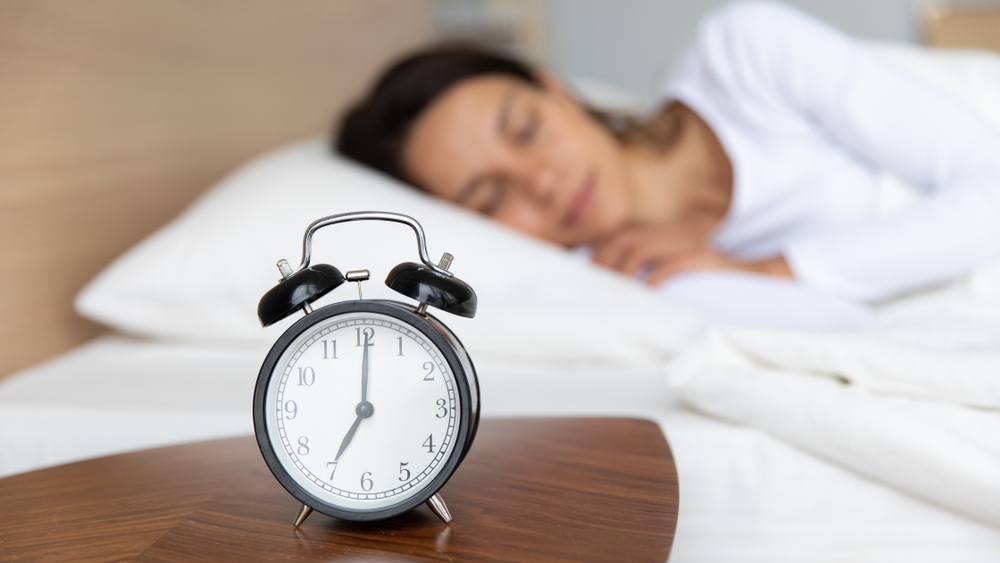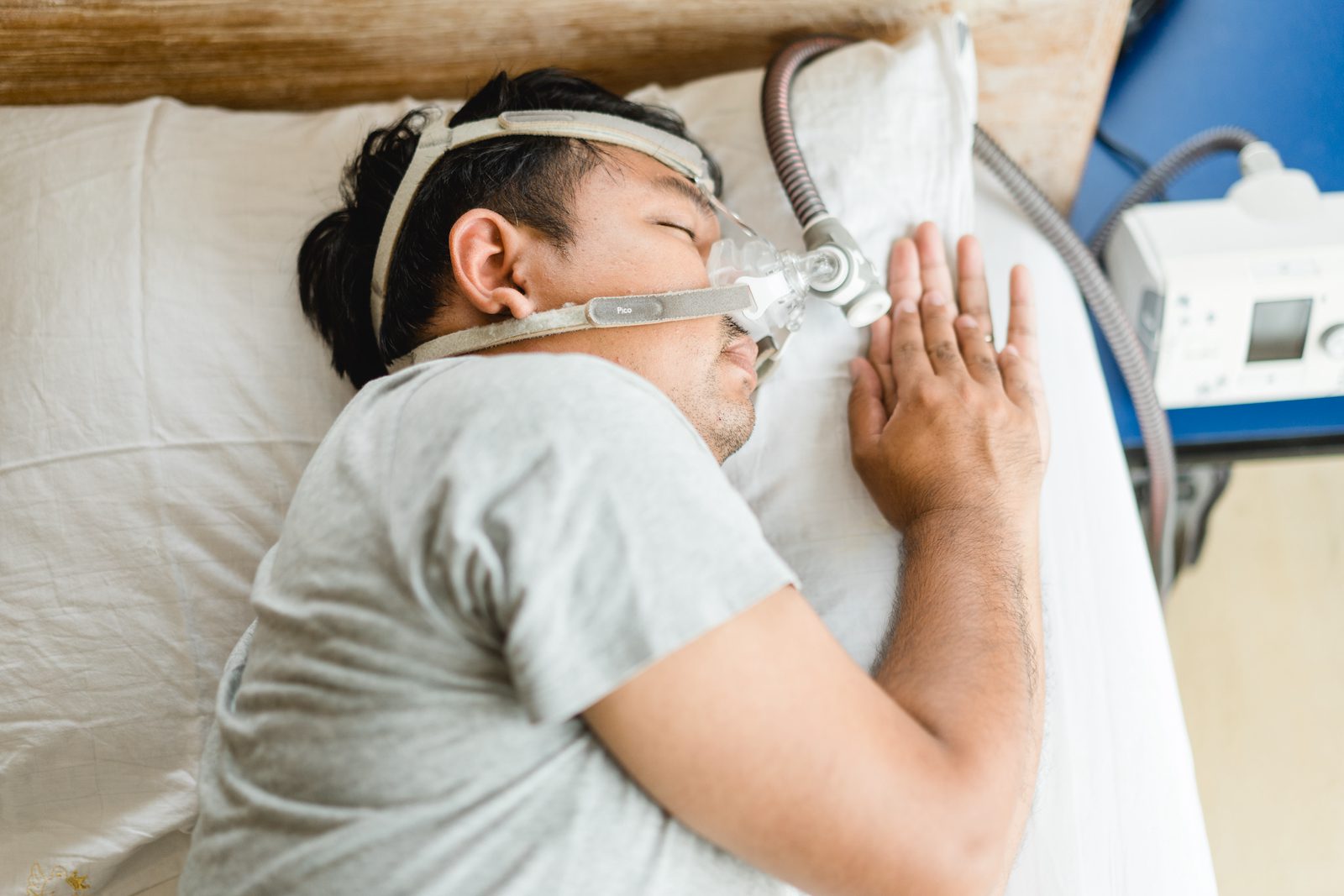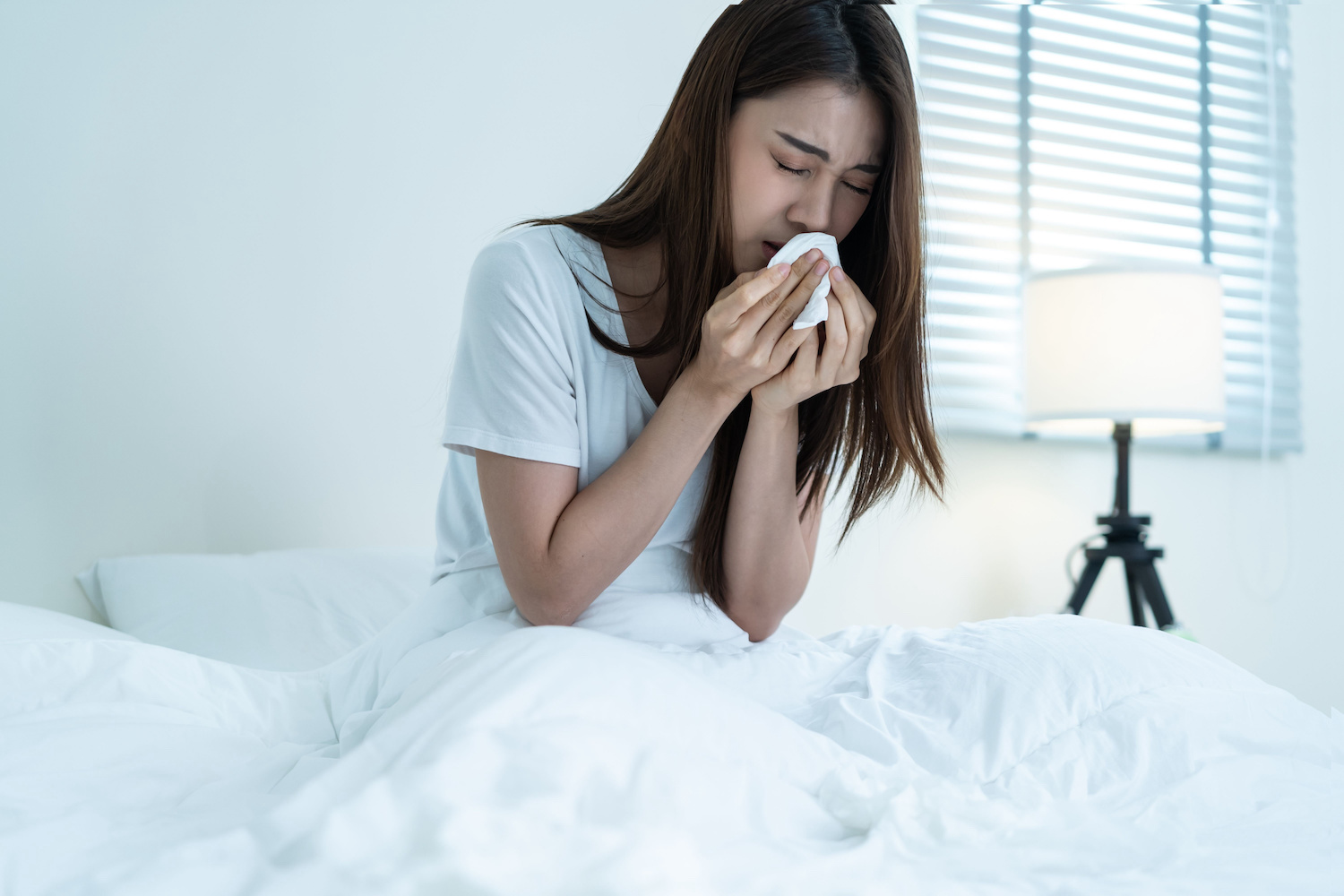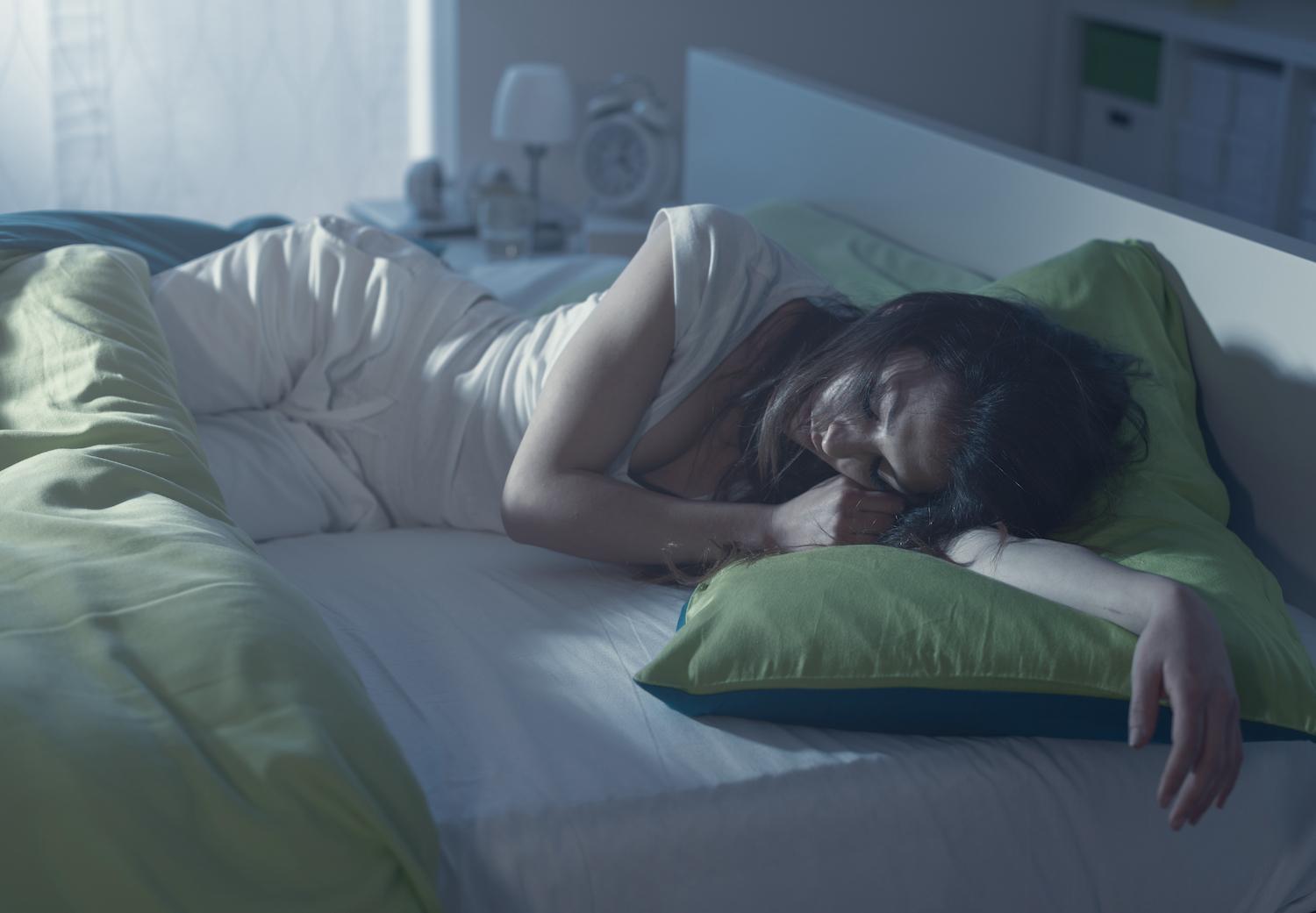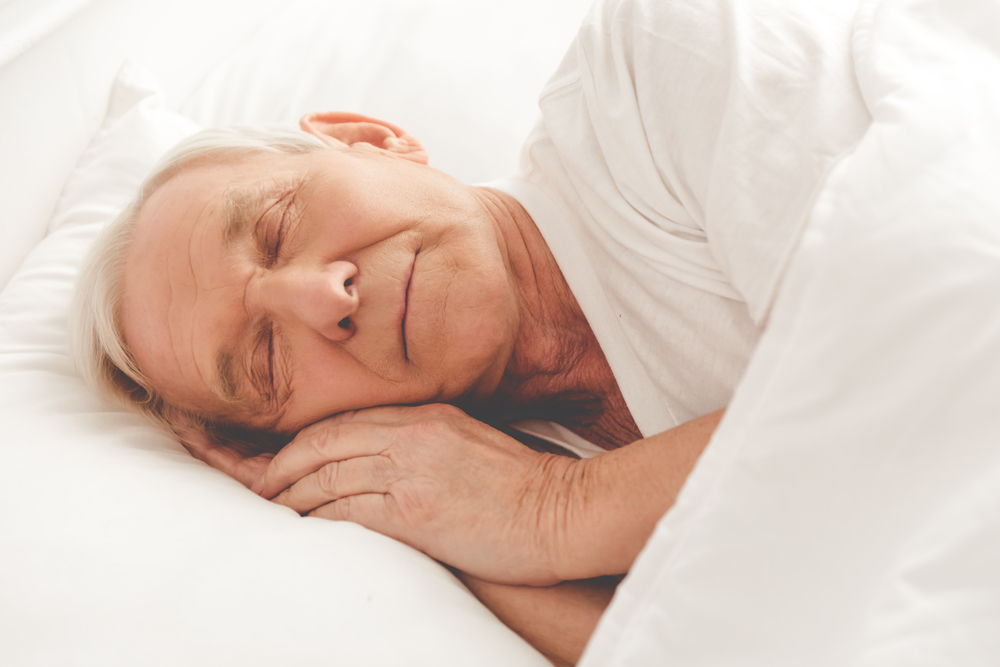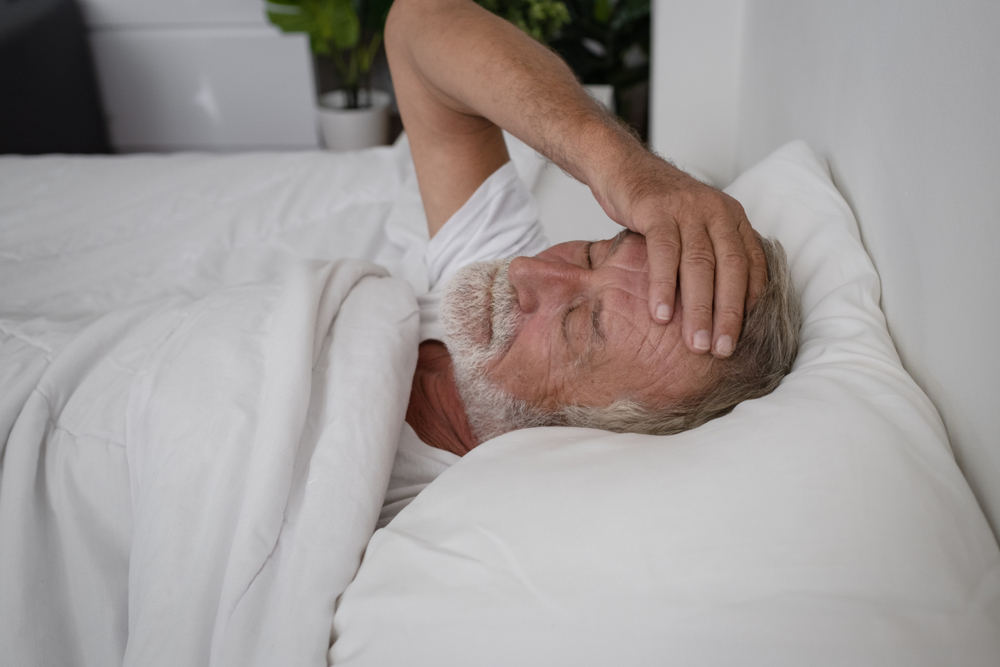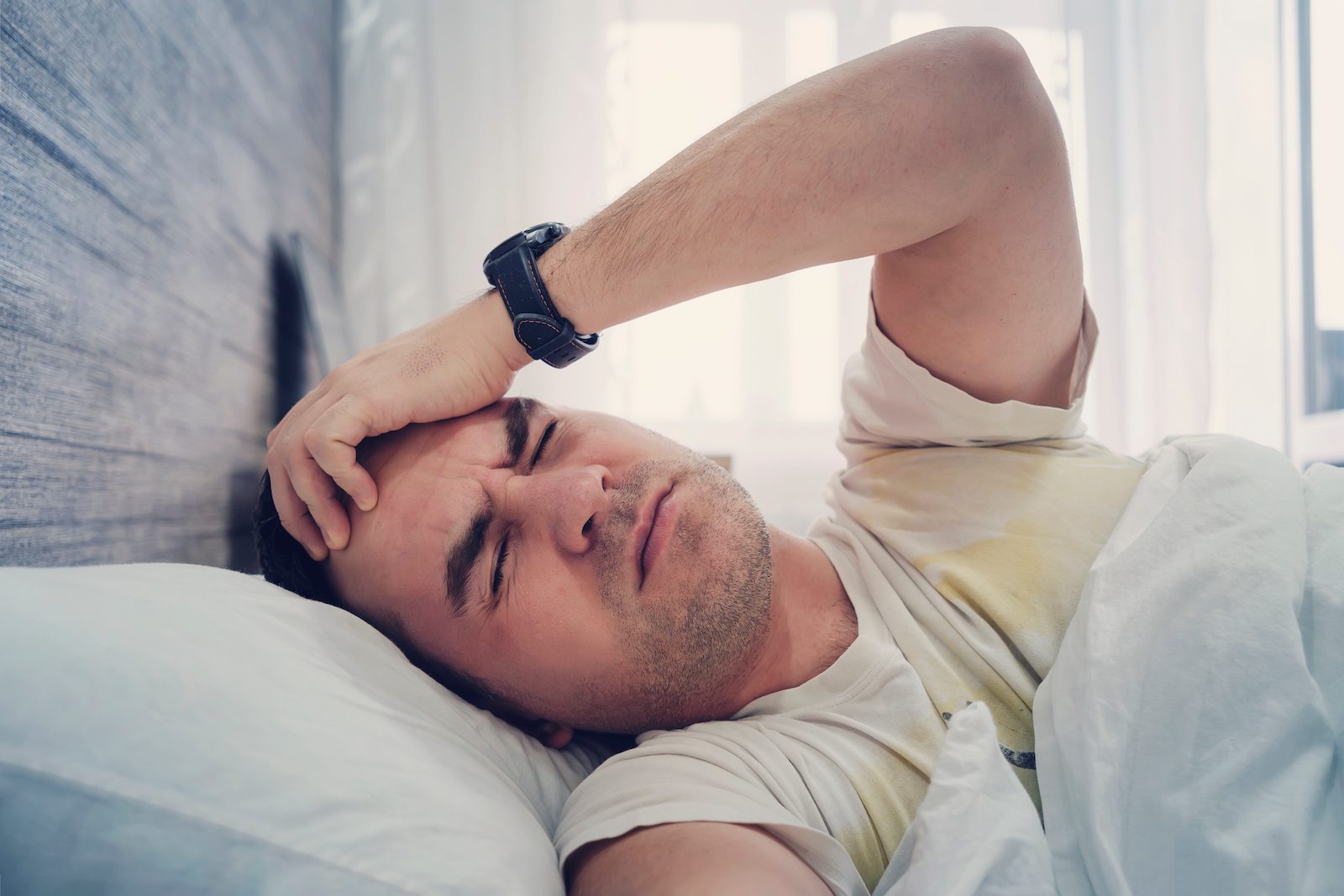Cheyne-Stokes respirations are a type of abnormal breathing pattern associated with medical conditions including central sleep apnea, heart failure, and stroke. Cheyne-Stokes breathing affects around 50% of people with central sleep apnea.
If you or someone you know has Cheyne-Stokes respiration, you may have questions about this type of breathing during sleep. Learn about Cheyene-Stokes respiration, including what it looks and sounds like, its causes, and treatments that a doctor may recommend.
What Is Cheyne-Stokes Breathing?
Cheyne-Stokes breathing is a condition that involves periods of heavy and rapid breathing that alternate with periods of shallow or absent breaths. This breathing pattern is usually associated with an underlying health condition. Cheyne-Stokes breathing is found in up to 50% of people with heart failure and 50% of people after a stroke.
Although Cheyne-Stokes breathing can happen while a person is awake, it most often occurs during sleep. When this breathing pattern during sleep is accompanied by pauses in breath, it is diagnosed as a type of central sleep apnea. Around half of people with central sleep apnea experience Cheyne-Stokes breathing after falling asleep.
Why Do Cheyne-Stokes Respirations Happen?
Experts believe that Cheyne-Stokes breathing happens because of a delay in the brain’s detection of the level of carbon dioxide in the blood. This delay throws off the normal pace of breathing.
Breathing is the body’s way of taking in oxygen and releasing carbon dioxide. During sleep, breathing is regulated by a part of the brain called the respiratory center. The respiratory center receives signals from cells within the arteries about the levels of oxygen and carbon dioxide in the blood. The brain uses these signals to control the muscles involved in breathing.
In Cheyne-Stokes respirations, a delay in these signals limits the brain’s ability to maintain a steady rate of breathing. Breathing becomes rapid to reduce carbon dioxide in the blood but overcorrects, and this causes an abnormally low level of carbon dioxide. In response, breathing slows or stops, overcorrecting once again and restarting the cycle.
What Causes Cheyne-Stokes Breathing?
Cheyne-Stokes breathing is caused by a delay in the time it takes for breathing to properly adjust to the level of carbon dioxide in the blood. This delay can be caused by medical conditions that affect the feedback between the lungs and brain, abnormalities in the amount of oxygen and carbon dioxide stored in the body, or conditions that affect the body’s drive to breathe.
The body goes through natural changes after falling asleep that increase the risk of Cheyne-Stokes breathing. During sleep, the body’s respiratory drive naturally declines, and the brain becomes less sensitive to changes in oxygen and carbon dioxide in the blood.
These changes are harmless in people who are otherwise healthy, but they can cause Cheyne-Stokes breathing and central sleep apnea in people with certain medical conditions.
Issues that can contribute to the development of central sleep apnea with Cheyne-Stokes breathing include heart failure, stroke, and altitude-induced illness.
- Heart failure: Heart failure happens when the heart isn’t able to effectively pump blood to other parts of the body. Central sleep apnea with Cheyne-Stokes breathing occurs in as many as half of people with heart failure. It’s more common in certain people, including males, people over 60 years old, and people with an irregular heart rhythm.
- Stroke: A stroke occurs when blood flow to the brain is blocked or a blood vessel in the brain ruptures. Cheyne-Stokes breathing is triggered in up to half of people after a stroke. A stroke can also worsen Cheyne-Stokes breathing in people who already have the condition. For some people, central sleep apnea with Cheyne-Stokes breathing after a stroke may resolve on its own over time.
- Altitude: Cheyne-Stokes breathing can be triggered by changes in altitude that result in a lower availability of oxygen. Abnormal breathing may occur as low as 4,500 feet in elevation but becomes more common above 9,000 feet.
Cheyne-Stokes breathing can also happen at other times, such as during kidney failure, in certain neurological disorders, and when a person is actively dying. As a symptom of the final hours of life, Cheyne-Stokes breathing may accompany other symptoms like no longer eating or drinking, withdrawal from others, weakness, confusion, and a decrease in blood pressure.
Symptoms of Cheyne-Stokes Breathing
The primary symptom of Cheyne-Stokes respiration is periods of abnormal breathing that occur while a person is awake or asleep. During these periods, a person cycles between heavy breathing and shallow or paused breathing. Abnormal breathing may be first noticed by a caregiver or bed partner.
Other symptoms of Cheyne-Stokes breathing vary based on the underlying cause and whether abnormal breathing is associated with central sleep apnea.
Symptoms of central sleep apnea with Cheyne-Stokes breathing include:
- Excessive tiredness during the day
- Difficulty sleeping
- Shortness of breath at night
- Snoring
When Cheyne-Stokes breathing develops after heart failure, symptoms may also include coughing, weakness, swelling in the lower limbs, and shortness of breath. Difficulty breathing may wake a person up at night or occur when lying down or performing physical activity.
Cheyne-Stokes breathing after a stroke may occur with other symptoms of a stroke such as weakness on only one side of the body, nerve changes, and problems with movement.
Cheyne-Stokes Respiration and Other Conditions That Affect Breathing
Cheyne-Stokes breathing isn’t the only condition that can affect breathing during sleep. In fact, there are several other types of central sleep apnea that don’t involve this unique breathing pattern.
In other kinds of central sleep apnea, a sleeper may breathe too rapidly or too slowly with pauses in breathing, but their breathing may not show the distinct Cheyne-Stokes pattern.
Central sleep apnea is a type of sleep-related breathing disorder. Other disorders involve abnormal breathing during sleep but without Cheyne-Stokes breaths.
- Obstructive sleep apnea: Obstructive sleep apnea is the most common sleep-related breathing disorder. While central sleep apnea is caused by a communication issue between the brain and the breathing muscles, obstructive sleep apnea is caused by a restriction or blockage in the upper airway.
- Sleep-related hypoventilation disorders: Sleep-related hypoventilation disorders are a group of conditions in which breathing is insufficient during sleep, causing the level of carbon dioxide in a person’s blood to be abnormally high. These changes in breathing may be associated with obesity, medication, or another medical condition.
- Sleep-related hypoxemia disorder: Sleep-related hypoxemia disorder is characterized by low levels of oxygen in the blood during sleep. This sleep disorder is often linked to an underlying health condition.
Cheyne-Stokes respiration is also just one of several types of abnormalities in the body’s regulation of breathing. Other disorders that may affect the control of breathing include asthma, chronic obstructive pulmonary disorder, and congenital central hypoventilation syndrome.
- Asthma: Asthma is caused by inflammation in the airways. Not everyone with asthma has issues with the regulation of breathing, but some people are vulnerable to more severe asthma attacks because their breathing is less responsive to changes in levels of oxygen and carbon dioxide.
- Chronic obstructive pulmonary disease: Chronic obstructive pulmonary disease (COPD) is a common condition that disrupts breathing. COPD can affect the drive to breathe, leading to abnormal levels of oxygen or carbon dioxide in the blood.
- Congenital central hypoventilation syndrome: Also called Ondine’s curse, this is a rare condition in which the brain doesn’t adjust breathing patterns in accordance with changes in carbon dioxide levels in the blood. Without unconscious control of breathing, respiration becomes abnormal at night when a person doesn’t make directed efforts to breathe.
Additionally, certain medications and illegal drugs can affect a person’s respiratory system and the drive to breathe. These drugs include certain anesthetics, benzodiazepines, and opioids. Alcohol can also negatively affect the body’s ability to respond to high levels of carbon dioxide in the blood.
Diagnosis of Cheyne-Stokes Respirations
Diagnosing Cheyne-Stokes breathing requires evaluating breathing patterns. When Cheyne-Stokes breathing is associated with central sleep apnea, testing is needed to assess how breathing patterns and other vital signs change in the body during sleep.
To evaluate breathing during sleep, doctors typically recommend a sleep study. Sleep studies are overnight tests that are usually conducted at a sleep center. During a sleep study, various measurements are recorded while a person is sleeping.
Home sleep apnea tests are now available but are not considered reliable for evaluating central sleep apnea and Cheyne-Stokes breathing. Anyone with suspected Cheynes-Stokes respiration should undergo a sleep study at a sleep clinic.
Though abnormal breathing may be witnessed by a bed partner at home or by a healthcare professional in people who are hospitalized, central sleep apnea with Cheyne-Stokes breathing cannot be diagnosed by symptoms alone.
Treatment of Cheyne-Stokes Respirations
Treatment of Cheyne-Stokes breathing is typically geared towards addressing the underlying cause of abnormal respiration, such as heart failure or stroke.
In people with central sleep apnea with Cheyne-Stokes breathing, additional treatment may be used to support breathing and normalize oxygen levels in the blood.
- Supplemental oxygen: Also called oxygen therapy, supplemental oxygen is used to provide additional oxygen to meet the body’s needs. Supplemental oxygen may be used alone or in combination with positive airway pressure (PAP) therapies.
- Continuous positive airway pressure (CPAP): CPAP is a form of positive airway pressure therapy that pumps a continuous stream of air into the lungs during sleep. CPAP is typically the first choice of treatment for people with central sleep apnea with Cheyne-Stokes breathing.
- Bilevel positive airway pressure (BiPAP or BPAP): BiPAP is another form of PAP therapy, but the machine increases the pressure of the stream of air during inhalation and decreases the pressure during exhalation. BiPAP may be recommended when CPAP or supplemental oxygen therapy aren’t effective in normalizing nighttime breathing.
- Adaptive servoventilation: Adaptive servoventilation (ASV) is an advanced form of PAP therapy that assesses breathing in real-time and adjusts pressure accordingly. ASV may be used in some people with central sleep apnea but is not recommended for some individuals with heart failure.
- Medications: Few studies have looked at the long-term effects of medications used to stimulate breathing, though medications may be recommended when other treatment options are limited.
- Nerve stimulation: Phrenic nerve stimulation is a treatment for central sleep apnea in which a medical device is implanted in the body to regulate breathing. The device affects breathing by stimulating the phrenic nerve, which causes the diaphragm to contract. Nerve stimulation is typically reserved for when other treatments aren’t successful.



